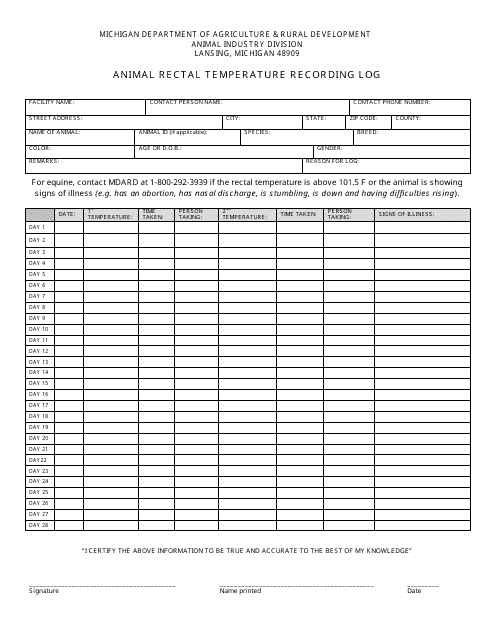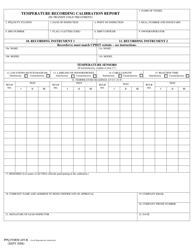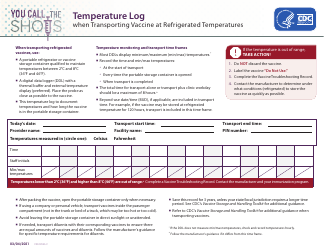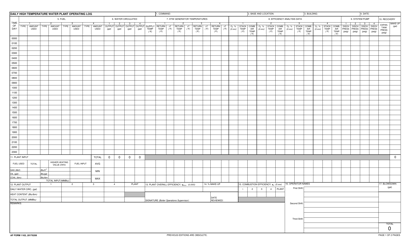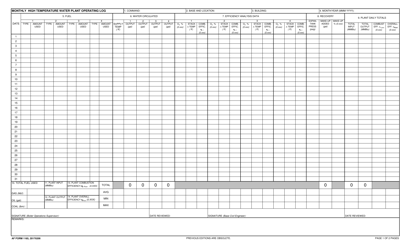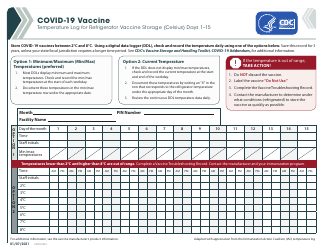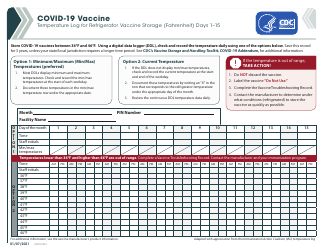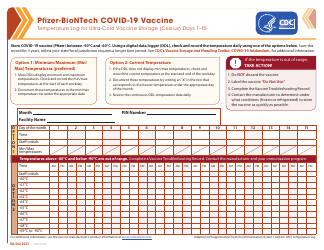Animal Rectal Temperature Recording Log - Michigan
Animal Rectal Temperature Recording Log is a legal document that was released by the Michigan Department of Agriculture and Rural Development - a government authority operating within Michigan.
FAQ
Q: What is an animal rectal temperature recording log?
A: An animal rectal temperature recording log is a record of the temperature measurements taken from an animal's rectum.
Q: Why is rectal temperature recording important for animals?
A: Rectal temperature recording is important for animals because it can indicate if they have a fever or other abnormal body temperature, which could be a sign of illness or infection.
Q: Who performs the animal rectal temperature recording?
A: The animal rectal temperature recording is usually performed by a veterinarian or a trained animal care professional.
Q: What kind of animals are included in the log?
A: The animal rectal temperature recording log can include various types of animals, such as pets, livestock, or wildlife.
Q: How often should the temperature be recorded?
A: The frequency of temperature recording depends on the specific situation and the animal's condition. Typically, it may be recorded once or twice daily.
Q: What are the units used to record the temperature?
A: The temperature is usually recorded in Fahrenheit (°F) in the animal rectal temperature recording log.
Q: Are there any specific guidelines for recording the temperature?
A: Yes, there are specific guidelines for recording the temperature, such as using a lubricated thermometer and ensuring the animal is restrained properly to ensure safety and accuracy.
Q: What should be done if the recorded temperature is abnormal?
A: If the recorded temperature is abnormal, it is recommended to consult a veterinarian for further evaluation and appropriate treatment.
Q: Is the animal rectal temperature recording log required by law?
A: The requirement of an animal rectal temperature recording log may vary depending on specific regulations, such as for livestock or research animals.
Form Details:
- The latest edition currently provided by the Michigan Department of Agriculture and Rural Development;
- Ready to use and print;
- Easy to customize;
- Compatible with most PDF-viewing applications;
- Fill out the form in our online filing application.
Download a fillable version of the form by clicking the link below or browse more documents and templates provided by the Michigan Department of Agriculture and Rural Development.
